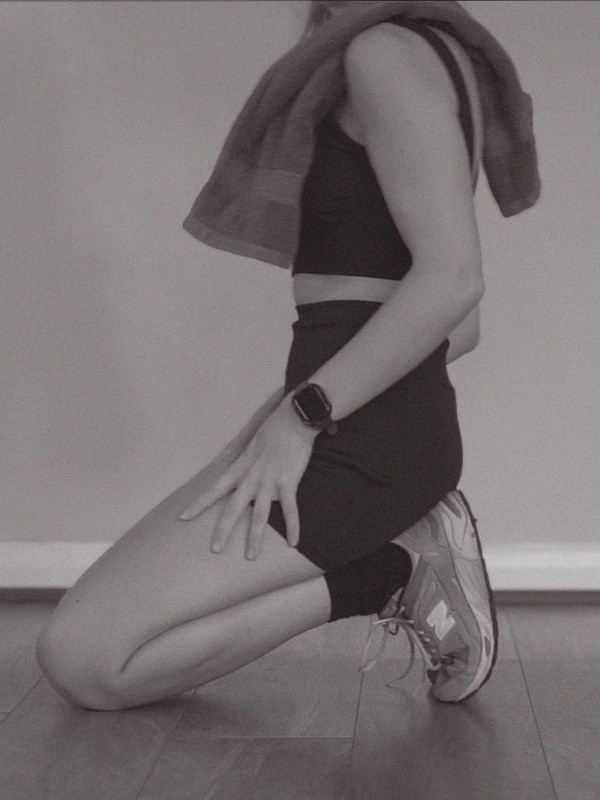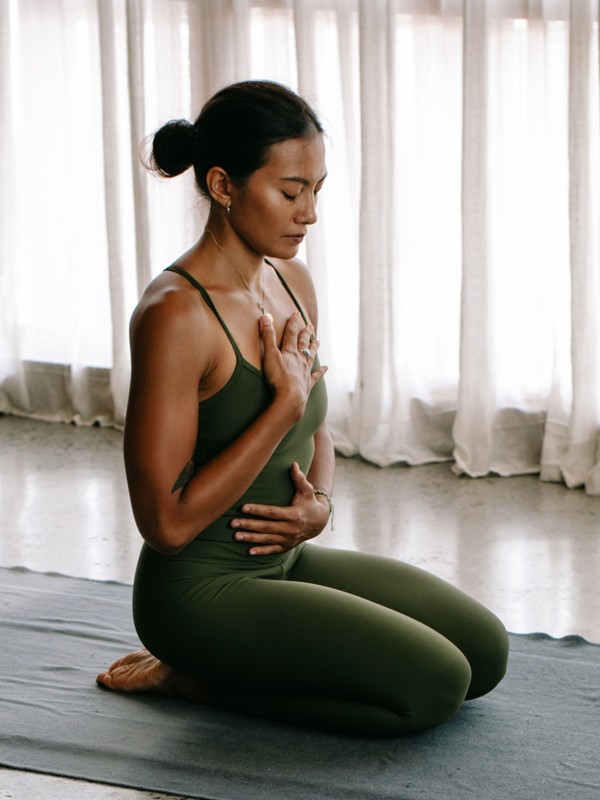How Meditation Can Help You Get A Better Night’s Sleep
Listen To A Sleep Story
“A sleep story may not be a classic form of meditation, but they help you focus on an anchor, typically the breath, to quiet the mind and help lingering thoughts dissolve. As the characters in a sleep story travel along their journeys, fully immersed in the present moment, the idea is that you, as the listener, are too. When a sleep story opens, the narrator usually starts by guiding you through a quick body-scan exercise to help quiet the mind and relax the body. Throughout the story, the character tends to scan through their sensations so you can do the same.” – the experts at Calm
Consider Yoga Nidra
“If you have a spare 20 minutes, consider yoga nidra. A meditative state, where the body is deeply relaxed, and the mind is calm but awake – a kind of sleep with awareness – it’s your shortcut to a better night’s sleep. It’s usually practiced lying down, guided by the voice of an experienced practitioner. It’s a very forgiving practice that’s suitable for everyone and offers huge benefits, such as stress management, physical rest and recovery and the ability to better deal with difficult emotions. Just one 20-minute practice can transform your day. Think of it as the difference between the groggy, grumpy feeling you have when you’ve slept badly to the calm and clarity you have when well rested. Yoga nidra combines mindfulness, breathwork and body scanning to allow you to let you and fall deeper into a state of deep relaxation. Try one of my sessions or download the Nourish app. Jennifer Piercy’s sessions on Insight Timer are also great, as are James Reeves’ meditations.” – Dot Zacharias, COO of The Nourish App
Get Stretching
“The right kind of yoga can help relax the body and prepare you for sleep. When done correctly, Kundalini yoga can put you into a calm, restful state in a matter of minutes. A front life nerve stretch is a good place to start. Sit with your legs stretched out in front of you and fold forwards; depending on your flexibility, hold onto your big toes or somewhere between the knee and shin. Inhale and look forwards, and then exhale, fold at the waist and look down. Repeat slowly, inhaling up and exhaling, folding forwards. We hold a lot of emotional tension in the back of the legs but stretching in this way can help release tension and help you get rid of the day’s stress. Happy baby is also great – lie on your back, bend your knees and hold onto the big toes or the outside of your feet. This lowers the heart rate, releases stress and brings you into a sleepier state.” – Tara Nash, yoga teacher and breathwork facilitator
Harness The Power Of Essential Oils
“There are a number of factors that contribute to an inability to fall or stay asleep, but through trial and error I’ve found one of the best ways to fight insomnia is through a combination of meditation and essential oils. Keep essential oils by your bed so they are always to hand – lavender and rose is the ultimate sleep-inducing combination. Before getting into bed, rub a few drops of each oil onto your wrists, temples and heart and breathe deeply. Then climb into bed and meditate for five minutes. Deepak Chopra’s Five-Minute Sleep Meditation and Bob Baker’s Five-Minute Guided Meditation to Deeper Sleep on the Insight Timer app are my go-tos. If you have more time, try Boho Beautiful – all their meditations are fantastic and many of them are free on YouTube. They combine soothing music with mantras geared towards grounding and relaxation.” – Alexandra Baldi, founder of Compass Chelsea
Use The Relaxing Breath
“For those nights when sleep simply won’t come or you’ve woken up and are struggling to get back to sleep, try breathwork. The 4-7-8 breathing technique, often referred to as ‘the relaxing breath’ works wonders. Start by placing the tip of your tongue behind your front teeth and start to exhale through your mouth, which will create a whooshing sound. Ensure your mouth is closed, and then begin to inhale through your nose for a count of four; hold the breath for a count of seven and with control, start to exhale through your mouth for a count of eight, creating that same whooshing sound. It’s important to take yourself through four rounds of this technique for the best results.” – Alexandra
Keep It Simple
“If you struggle with the idea of holding your breath (anyone with respiratory issues such as asthma can find it tricky), there are plenty of other methods you can try. Aim for five and ten; that’s breathing in for a count of five and out for a count of ten. What’s really important while you’re doing this is the mantra: slow, light and deep. You should be breathing slowly, as the counts suggest, lightly enough that there’s no sharpness of breath and you can hardly even feel hairs in your nose move, and deeply enough that you’re emptying and filling the belly before the chest. The key to getting a better night’s sleep lies in the ability to de-stress your mind, body and breath before bed. The vagus nerve is the longest nerve of the autonomic nervous system and plays a key role in the parasympathetic system. Stimulating the nerve activates this system, allowing your body to get into relax mode quicker, and therefore a better natural state for sleep.” – Stuart Sandeman, leading breath coach and resident wellbeing expert at NEOM
Learn To Let Go
“One of my favourite techniques for calming down before bed is what is sometimes called 'feeling yoga' or 'The Sedona Method'. It involves asking yourself 'Can I welcome this feeling?’ You're welcoming whatever you're feeling in that moment, for example anger, anxiety or tension. After you've welcomed the feeling, ask yourself if you could let the feeling go. This is a great way to feel and release any emotions that could be keeping you awake. If you struggle with that, consider a body scan, one of the simplest meditations to do before bed. Scan through each part of the body and imagine each part relaxing and releasing in turn. This not only relaxes the body, but it calms the mind and brings you into the present moment.” – Chloe Brotheridge, hypnotherapist, mentor and coach at Calmer-You and co-creator of The Anxiety Solution App
Listen To Music
“Listening to the right music can instantly bring you into a meditative state. The music from the Kundalini yoga community is so powerful – Kirtan Sohila and Ra Ma Da Sa both by Snatam Kaur can be found on Spotify. The mantras and vibrations are deeply healing and work with your subconscious. I recently gave a friend of mine Ra Ma Da Sa to get her baby to sleep – she now swears by it and plays it to her little girl every night. It really is the most healing mantra.” – Tara
For more information head to Calm.com, TheNourishApp.com, Tara-Nash.com, CompassChelsea.com, NEOMorganics.com and Calmer-You.com
DISCLAIMER: Features published by SheerLuxe are not intended to treat, diagnose, cure or prevent any disease. Always seek the advice of your GP or another qualified healthcare provider for any questions you have regarding a medical condition, and before undertaking any diet, exercise or other health-related programme.
CREDITS: Kinga Cichewicz/UNSPLASH
DISCLAIMER: We endeavour to always credit the correct original source of every image we use. If you think a credit may be incorrect, please contact us at info@sheerluxe.com.






